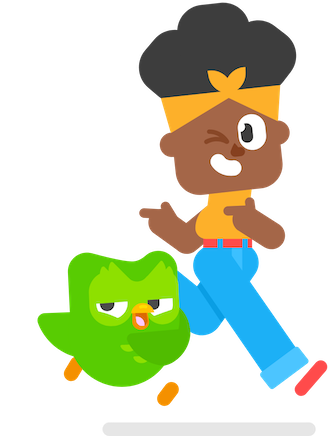Yes—a word that can mean so much in so few letters. It’s a simple word that we say all the time, to agree with questions, requests, statements and more!
Because yes is such a key part of communication in English, you probably expect other languages to have their own ways of showing agreement—and you’re right! But here’s the twist: Not all of them do it in the same way.
Here are ways different languages say yes, and (spoiler!) it’s not always as straightforward as you’d expect!
Yes and…
Have you ever noticed how many ways there are to say yes in English? Whether it’s yeah, yep, of course, sure, or uh-huh, English gives us plenty of options—and we use them pretty interchangeably. Some other languages also have more than one word for yes, but they’re not always used in the same situations. Let’s take a look at a few examples.
Oui or si?
In English, if someone asks you Are you hungry? and you are, you’ll say yes. Simple, right? Now, if someone asks, You aren’t hungry?, what would you say? Just a yes or no probably isn’t enough, because the asker won’t know if you’re saying Yes, you’re correct, I’m not hungry or Yes, I actually am hungry. In English, we have to say more to specify what we mean in those cases. We might say, for example, No, I am or Yes, I am hungry to clarify.
But some languages—like French, German, and some Arabic dialects—have a special word for saying yes when the question includes the word not. In French, for example, if someone asks you, Tu n’as pas faim ? (You’re not hungry?), you wouldn’t reply with oui (the usual word for “yes”). Instead, you’d say Si !—a way of saying, “Actually, I am!” No extra explanation needed. (And yes, French si might look familiar—Spanish also uses sí to mean “yes,” but in Spanish, sí works in all situations.)
| Language | Do you speak English? | You don’t speak English? |
|---|---|---|
| English | Yes (I speak English)!* | Yes, I do (speak English)! |
| French | Oui (je parle anglais) ! | Si (je parle anglais) ! |
| German | Ja (ich spreche Englisch)! | Doch (ich spreche Englisch)! |
| Syrian Arabic | !إيه (بحكي إنجليزي) 2ee (biHkii 2ingliizii)! |
!مبلا (بحكي إنجليزي) mbalaa (biHkii 2ingliizii)! |
*Parentheses indicate that that part of the sentence is optional.

Mind your manners!
In some other languages, the exact word you use to say yes will depend on who you’re talking to!
In Japanese, for example, you would use the casual form うん (un) to talk to family members or close friends and the polite form はい (hai) with just about anyone else (strangers, coworkers, teachers, bosses, or customers). There’s even a polite form for no in Japanese!
Similarly, in Korean, you can say 응 (eung) with friends and 네 (ne) or 예 (ye), which is slightly more polite, in more formal situations!
| Language | Casual | Polite |
|---|---|---|
| Japanese | うん un |
はい hai |
| Korean | 응 eung |
예 / 네 ye / ne |
You can kind of think of this as the same as saying yes when you’re trying to be polite and yeah when you’re with people you’re on more familiar terms with.
When yes feels too short
Now, in English you might answer a question like Do you like pizza? with Yes, I do! or Yes, I do like pizza! or even I LOVE pizza!! but it’s also pretty common to just give a simple yes. In some other languages, however, answering with just a yes is, well, a little weird…
In Japanese, for example, simply answering with a yes or no might sound like you’re trying to cut a potential conversation topic short, so it’s much more natural to also repeat parts of what was asked in your answer (this is usually the verb). You can think of this as sort of the “key words” of the question, that you use right in the response!
| Language | Question | Answer | Why? |
|---|---|---|---|
| Japanese | 楽しかったですか。 Tanoshikatta desu ka? Was (it) fun? |
はい、楽しかったです! Hai, tanoshikatta desu! Yes, (it) was fun! |
By repeating a part of the question in your answer (in this case, the verb and the adjective), you acknowledge the question and open up the conversation for more back and forth instead of cutting it short with a simple yes. |
Russian and Portuguese are two languages that have words for yes and no—but it’s actually more natural to repeat part of the question when answering it, without including the words yes or no at all. The most common way to respond is just to use the key word(s) of the question, as you can see in the following examples:
| Language | Question | Answer | Why? |
|---|---|---|---|
| Portuguese | Você é brasileiro? Are you Brazilian? |
(Sim, eu) sou. (Yes, I) am. |
The natural way to answer this question would simply be sou which just translates to “am.” |
| Russian | Ты хочешь пиццу? Ty khochesh pitstsu? Do you want pizza? |
Хочу. Khochu. (I) want. |
Unlike in English, the most natural and common way to answer this question is to respond with the verb or other keyword, in this case want. |
Answering Do you want (some) pizza? with I want is really strange in English, but in Russian, it’s the most natural and common way of answering the question! This doesn’t mean you can’t use yes at all, though. In Russian, for example, you can start your answer with yes, but, in most cases, you would say it while repeating parts of the question too (e.g. Yes, I speak!). This usually feels more formal or has just a little more emphasis than just answering with words from the question.
Languages without yes or no
Did you know that some languages don’t have words for yes (or no) at all? This is actually the case for many languages around the world, so let’s take a look at how they say yes without actually using some version of the word yes!
Welsh, for example, doesn’t have a single word for yes or no but rather a lot of different words used to answer specific questions. Irish, on the other hand, doesn’t have the words yes or no at all. Instead, Irish speakers repeat the verb for their answer. Chinese languages such as Mandarin Chinese are similar: Instead of using a specific word for yes or no, you just repeat the verb!
| Language | Question | Answer | Why? |
|---|---|---|---|
| Irish | An bhfuil tú dáiríre? Are you serious? |
Tá. (I) am. |
Irish doesn’t have words for yes (or no), so you can answer by repeating the key word(s)! |
| Mandarin Chinese | 你喜欢苹果吗? Nǐ xǐhuān píngguǒ ma? Do you like apples? |
喜欢! Xǐhuān! (I) like! |
In Chinese, it’s common to just repeat the verb from the question to say yes. |
Yes beyond the spoken word
We’ve talked a lot about different ways of saying yes in different languages, but how about showing yes?

A simple nod is all it takes in most parts of the world! Usually, it involves moving your head up and down by bending your neck, but in some cases, you can “nod” your hand *or* your finger!
In Mexico, for example, you can nod your finger in the same way you might nod your head to say yes! It’s a way you can show agreement if it might be hard for your voice to be heard. Just bend and extend your pointer finger as if it was a head nodding! Be careful, though, because “nods” aren’t necessarily universal: In Bulgaria, for example, you nod your head to say no and shake your head to say yes!
Nodding isn’t the only way to show agreement without actually speaking. In India, in addition to nodding, you can use your head to say yes with what is called a “head bobble.” It’s when you tilt your head from side to side to say yes or show that you’ve understood something. What it means exactly will depend on the context you use it in.
If you’re in Iceland or Sweden, however, while you can nod to say yes, you also might hear someone suck in air really sharply a few times throughout a conversation. This is just one way of saying that they agree with or understand what you’re saying. Sometimes, this will sound like they’re slurping a noodle–shoop!

But slurping isn’t the only version of this inhaled yes—often, just a quick, sharp intake of breath is enough. You can hear this other, less slurping-like version of nonverbal agreement not only in Scandinavia, but also in places like Ireland and certain regions of France.
In short, it’s important to know how the language or culture you’re learning about says yes, otherwise you might be a little confused if someone you’re talking to sucks in air or shakes their head. They might just be agreeing with you!
There are so many ways to say yes!
Yes is a small word with a big job in English—but translating it isn’t always as simple as those three letters might suggest! From nodding your head to repeating part of the question, languages around the world have all kinds of ways to express agreement—and we’ve only scratched the surface. How do you say yes in your language, or in the one you’re learning?
